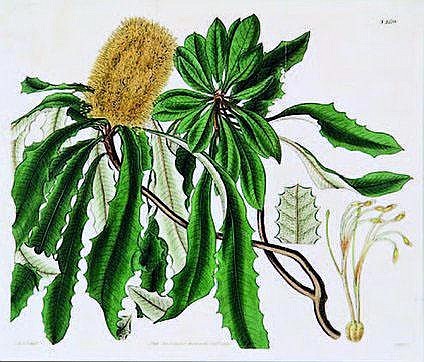HOOKER, William Jackson
William Jackson Hooker was born at Norwich, Norfolk on 6 July 1785, son of Joseph Hooker of Exeter. William was educated at Norwich High School after which his independent means enabled him to travel and take up the study of natural history, especially ornithology and entomology. On the recommendation of Sir James Edward Smith (1759-1828), he confined his attention to botany and at the suggestion of Sir Joseph Banks (1743-1820), his first botanical expedition in 1809, was to Iceland but the specimens he collected, along with his notes and drawings, were destroyed by fire on the homeward voyage. A good memory enabled him to publish an account of the island, its inhabitants and flora, and his 'Tour in Iceland' (1809), was privately circulated in 1811. In 1815 he married Maria Dawson Turner, eldest daughter of Dawson Turner (1775-1858), banker, of Great Yarmouth and settling at Halesworth, Suffolk, devoted himself in the formation of his herbarium, which became of worldwide renown among botanists. In 1816 the 'British Jungermanniae', his first scientific work, was published being succeeded by a new edition of William Curtis's 'Flora Londinensis', for which he wrote the descriptions (1817-1828) and by his 'Musci Exotici' (1818-1820), devoted to new foreign mosses and other cryptogamic plants. In 1820, he accepted the regius professorship of botany in the University of Glasgow and the following year brought out his 'Flora Scotica'. He worked with the Glasgow botanist and lithographer Thomas Hopkirk (1785-1841) in establishing the Royal Botanic Institution of Glasgow and to develop the Glasgow Botanic Gardens. His herbarium received large and valuable additions from all parts of the globe and his position as a botanist was vastly improved. Hooker was made a Knight of Hanover in 1836, and in 1841 appointed director of the Royal Botanic Gardens, Kew, in succession to William Townsend Aiton (1766-1849). Under his direction the gardens were expanded from 10 to 75 acres, with an arboretum of 270 acres, with many new glasshouses being erected, and a museum of economic botany established. William Jackson Hooker was engaged on the 'Synopsis Filicum' with John Gilbert Baker (1834-1920) when he contracted a throat infection, then epidemic at Kew, and died on 12 August 1865 and buried at St Anne's Church, Kew. He was succeeded at Kew Gardens by his son Sir Joseph Dalton Hooker (30 June 1817-10 December 1911), a rare example of an outstanding man succeeded in his post by an equally outstanding son. Ten of his etchings are in the Reeve Collection
Works by This Artist

|
Opening FlowerHand-colored lithograph
|

|
Banksia paludosa (swamp Banksia)Hand coloured lithograph
|